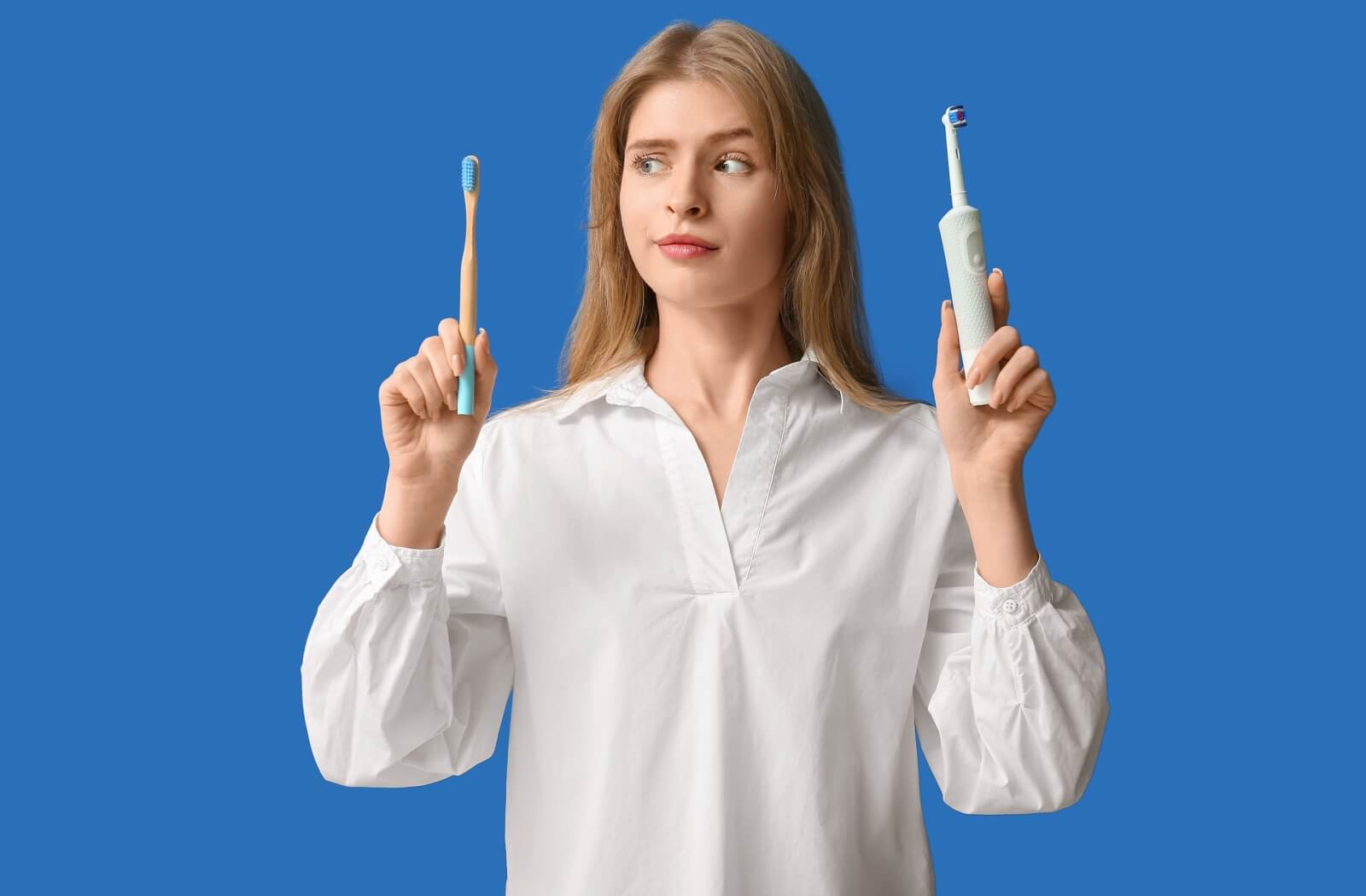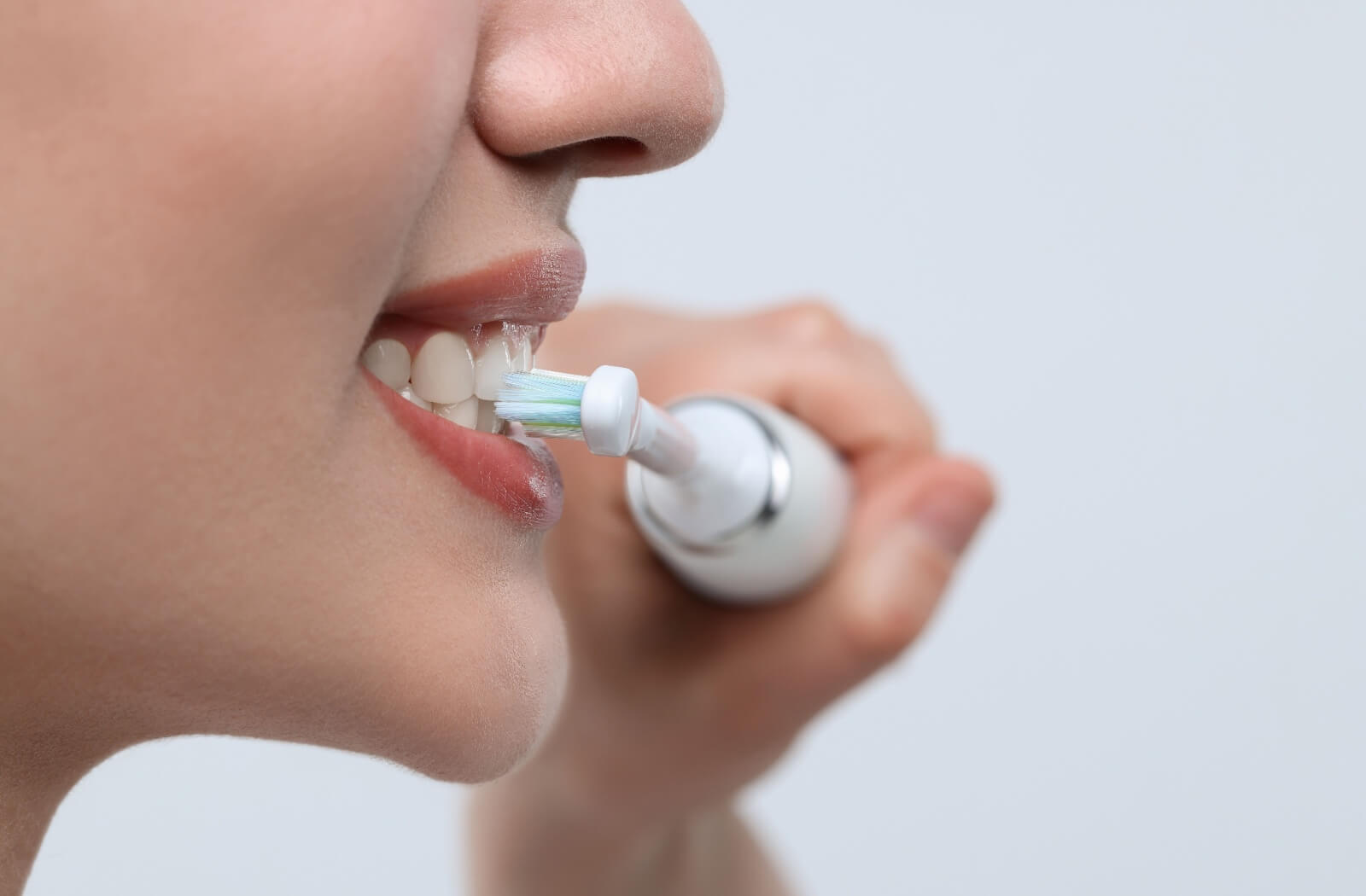How to Use an Electric Toothbrush
December 9, 2024

Electric toothbrushes have become a popular choice—and for good reason. They’re efficient, easy to use, and make maintaining good oral hygiene simpler and more effective. Using an electric toothbrush is pretty straightforward: apply a pea-sized amount of toothpaste, place it in your mouth, turn it on, and let the brush glide over your teeth at a 45-degree angle without pressing too hard. If you’re new to electric toothbrushes or thinking about switching from a manual one, you might have questions about how they work and the best way to use them. Let’s explore!
Why Choose an Electric Toothbrush?
Brushing your teeth is essential for your overall oral health, but an electric toothbrush can make your routine even easier. These smart tools come with a variety of advantages:
- Efficient cleaning: The bristles move quickly, making it easier to remove plaque and clean hard-to-reach areas.
- Ease of use: Ideal for individuals with limited mobility or health conditions that make traditional brushing more challenging.
- Timers for better habits: Many electric toothbrushes feature built-in timers to ensure you brush for the full recommended 2 minutes.
- Fun for kids: Their interactive and novel nature can make brushing more enjoyable for children, encouraging consistency.
While manual toothbrushes can be effective too, electric toothbrushes offer a more thorough clean, making them a smart addition to your daily oral care routine.
How to Properly Use Your Electric Toothbrush
Using an electric toothbrush is simple when you follow these steps:
- Apply toothpaste: Put a pea-sized amount of toothpaste onto the bristles.
- Place It in your mouth & turn it on: Put the toothbrush in your mouth first, then switch it on (avoid any toothpaste splatter)!
- Angle the brush: Hold it at a 45-degree angle against your teeth and gums.
- Let it glide: Move the toothbrush gently across your teeth, letting the electric motion do the cleaning for you.
- Brush every surface: Make sure to cover all surfaces of your teeth, including hard-to-reach spots.
- Don’t press too hard: The brush does the work—there’s no need to apply extra pressure.
Should You Brush Back & Forth with an Electric Toothbrush?
You’re probably used to brushing back and forth with a manual toothbrush, but with an electric one, you don’t need to scrub your teeth that way. The bristles’ rotating or vibrating motion does all the work. Simply guide the brush along each tooth’s surface and let it do its job.
It might feel a bit strange at first not using the scrubbing motion, but you’ll adjust quickly. If you prefer to move it gently back and forth, that’s okay too—just avoid applying too much pressure.
Can You Use an Electric Toothbrush with Braces?
If you have braces, an electric toothbrush can make your cleaning routine much easier. These brushes are great at reaching the tricky spots around brackets and wires. Some models even come with special brush heads designed specifically for cleaning around braces.
Not sure which electric toothbrush is best for your braces? Our dental team can recommend the best options to ensure your braces stay clean and your oral health stays on track.

Common Questions About Electric Toothbrushes
Are you supposed to wet an electric toothbrush?
Yes! Wetting your bristles before applying toothpaste can help the brush glide better and create a good lather, improving your brushing experience.
Should you brush your gums with an electric toothbrush?
Yes, gently! When brushing, ensure the bristles touch your gums at a 45-degree angle to clean the gumline effectively. This helps prevent gum disease and removes plaque buildup.
How many minutes should you brush with an electric toothbrush?
You should brush with an electric toothbrush for two minutes, as this is the recommended amount of time to thoroughly clean all surfaces of your teeth and remove plaque effectively. Many electric toothbrushes have built-in timers to help ensure you brush for the full two minutes, making it easier to maintain proper oral hygiene.
Are There Downsides to Using an Electric Toothbrush?
While electric toothbrushes offer numerous benefits, they do come with a few minor drawbacks. They tend to cost more than manual toothbrushes, and the brush heads need to be replaced regularly, which can add to the expense. Additionally, electric toothbrushes require charging or batteries and can be bulkier, making them less portable. However, for most people, the advantages—such as a cleaner, more efficient brushing experience—far outweigh these small inconveniences.
Should You Switch to an Electric Toothbrush?
Electric toothbrushes are an excellent addition to your oral care routine, but they can’t replace regular dental checkups. Your oral health depends on both proper daily care and consistent visits to your dentist.
At Westwood Dental in Mississauga, we’re here to support you on your journey to a healthy smile. Whether you have questions about electric toothbrushes, braces, or your overall oral care routine, our experienced team can help. Schedule your annual dental cleaning today! Our experienced team understands that every smile is unique, which is why we tailor each treatment plan to fit your individual needs.